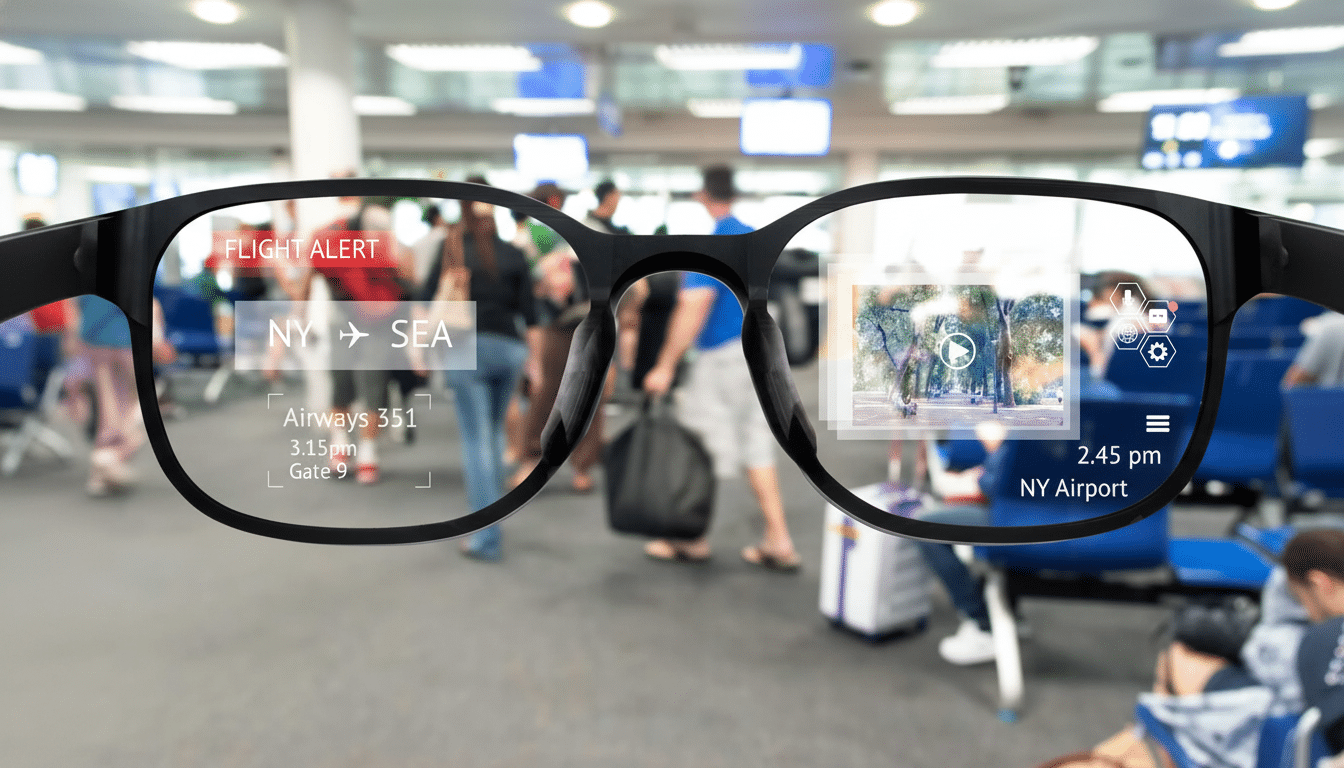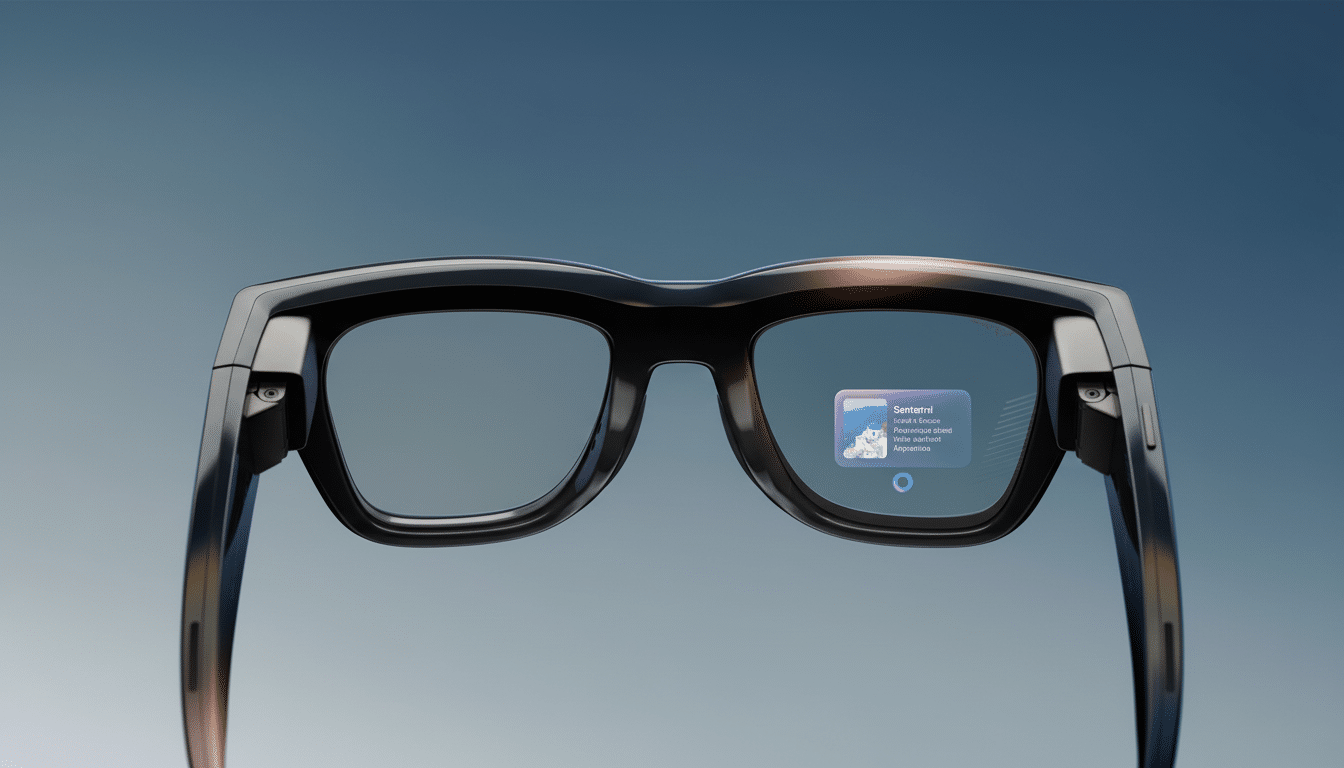If you receive a package on your doorstep next time, the person dropping it off might be wearing smart glasses. This isn’t a fashion experiment. Amazon is testing AI-powered eyewear for delivery associates in order to lessen the minutes, seconds, and even milliseconds a route takes — which ultimately wind up as tracking updates and on-time deliveries.
How the Smart Glasses Work on Delivery Routes
These business glasses slap a stripped-down heads-up display on the driver’s face with the important information, like the right address, how many packages, and a visual cue that they grabbed the right box out of the van. Built-in computer vision scans labels automatically, saving you the hassle and time to juggle a phone or handheld scanner.
- How the Smart Glasses Work on Delivery Routes
- Why It Matters For Customers and Drivers
- The Numbers on the Benefits of Smart Delivery Glasses
- Designed With Driver Input to Support Daily Routes
- Privacy and Accountability for AI-Powered Eyewear
- Part of a Bigger Last-Mile Shift in Delivery Work
- What Comes Next for Amazon’s Smart Delivery Glasses

Once parked, turn-by-turn walking directions powered by the company’s geospatial tech float into view for drivers to follow through buildings, apartment complexes, and tricky entrances. If hazards are detected — think blocked driveways or high steps — drivers receive an alert before moving.
Two forward-facing cameras snap hands-free proof-of-delivery photos, a task that usually requires a smartphone. Taps and swipes are managed by a compact controller that’s stowed in the delivery vest, with a hot-swappable battery designed to last for an entire shift. Vision-friendly frames and light-adjusting lenses are the wearable focus of the setup, though prescription fans will be able to slip their own glasses in as well, while an emergency button means you’re covered for when things go seriously wrong.
Why It Matters For Customers and Drivers
Heads-up computing also means fewer glances down and fewer opportunities for tripping up. The seconds add up quickly at the curb: shave off only 10 seconds per stop over well more than a hundred stops, and you’re suddenly winning back nearly half an hour that can be used for earlier drop-offs or to fit in fewer missed delivery windows.
For consumers, the win is precision. And when the glasses confirm the correct package and navigate the final few hundred feet, the chances of a misdelivery decrease. More photo evidence also means fewer “where’s my package” tickets and faster refunds when things go wrong.
The Numbers on the Benefits of Smart Delivery Glasses
McKinsey industry analysts estimate the last mile is more than half of all shipping costs. Small bumps in efficiency can also help accelerate the needle of both speed and sustainability. DHL has seen double-digit productivity gains in logistics pilots with AR glasses, further driving home the reality that visual workflows shine over handhelds when it comes to on-the-go work.

Safety is another lever. Data from the Bureau of Labor Statistics indicates that delivery workers have above-average rates of injuries, with slips, trips, and dog encounters among the most common risks. Looking ahead and keeping hands free can reduce exposure to such dangers in ways a phone cannot.
And proof-of-delivery matters beyond convenience. Consumer surveys from Security.org indicate tens of millions of Americans have had a package stolen. Clear images, shot uniformly and without fumbling, help resolve disputes more quickly and promote better placement training at the doorstep.
Designed With Driver Input to Support Daily Routes
Amazon says it designed the glasses with feedback from delivery associates, testing early prototypes on hundreds of drivers. That comes down to tiny but crucial decisions — weight distribution through the vest, tactile controls that function with gloves, and lenses that can accommodate prescriptions — so the tech supports the job rather than interfering with it.
Privacy and Accountability for AI-Powered Eyewear
Wearables inevitably raise monitoring questions. The dirty little secret is that, in reality, drivers are already taking pictures and scanning packages on phones. Reassigning that work to a standardized, hands-free device can actually create clearer boundaries: the same proof-of-delivery, less screenshotted ad hocery, and workflows that are easier to audit and secure. Digital rights groups and labor activists will appropriately demand transparent data policies, and the company will have to demonstrate guardrails around how video, images, and location trails are stored and used.
Part of a Bigger Last-Mile Shift in Delivery Work
Smart glasses are booming on the consumer side, but in frontline work they have arrived now. Logistics companies have for years been testing AR tools in warehouses; taking them curbside is the logical step forward. The variable here is software: lightweight optics paired with route intelligence, computer vision, and geospatial mapping as they pertain to the chaos of real neighborhoods.
What Comes Next for Amazon’s Smart Delivery Glasses
Amazon has offered a sneak peek at what’s next, including the ability to send instant alerts if a delivery goes wrong (for example, if the item is dropped in a garden or otherwise not on your property) and mobile notifications as pet sitters approach. An extended march to broad rollout has few public timelines, but the direction is obvious. If the glasses tend to shave off errors while also making things safer and yet cut no friction, then you can be sure that they’ll end up in common use — another sotto voce upgrade that will have manifested as nothing more than packages showing up right where and as you want them.

